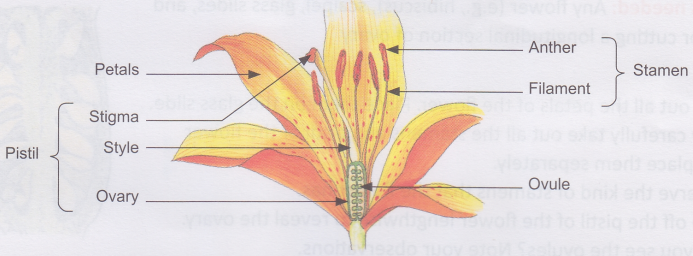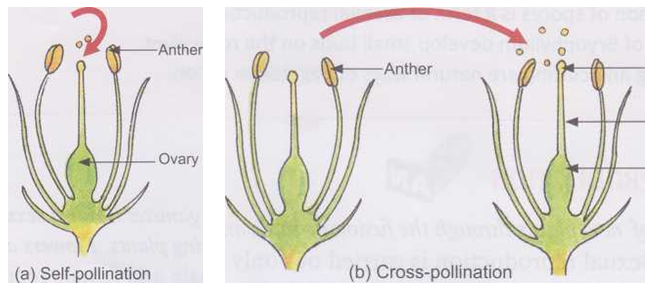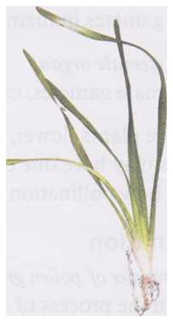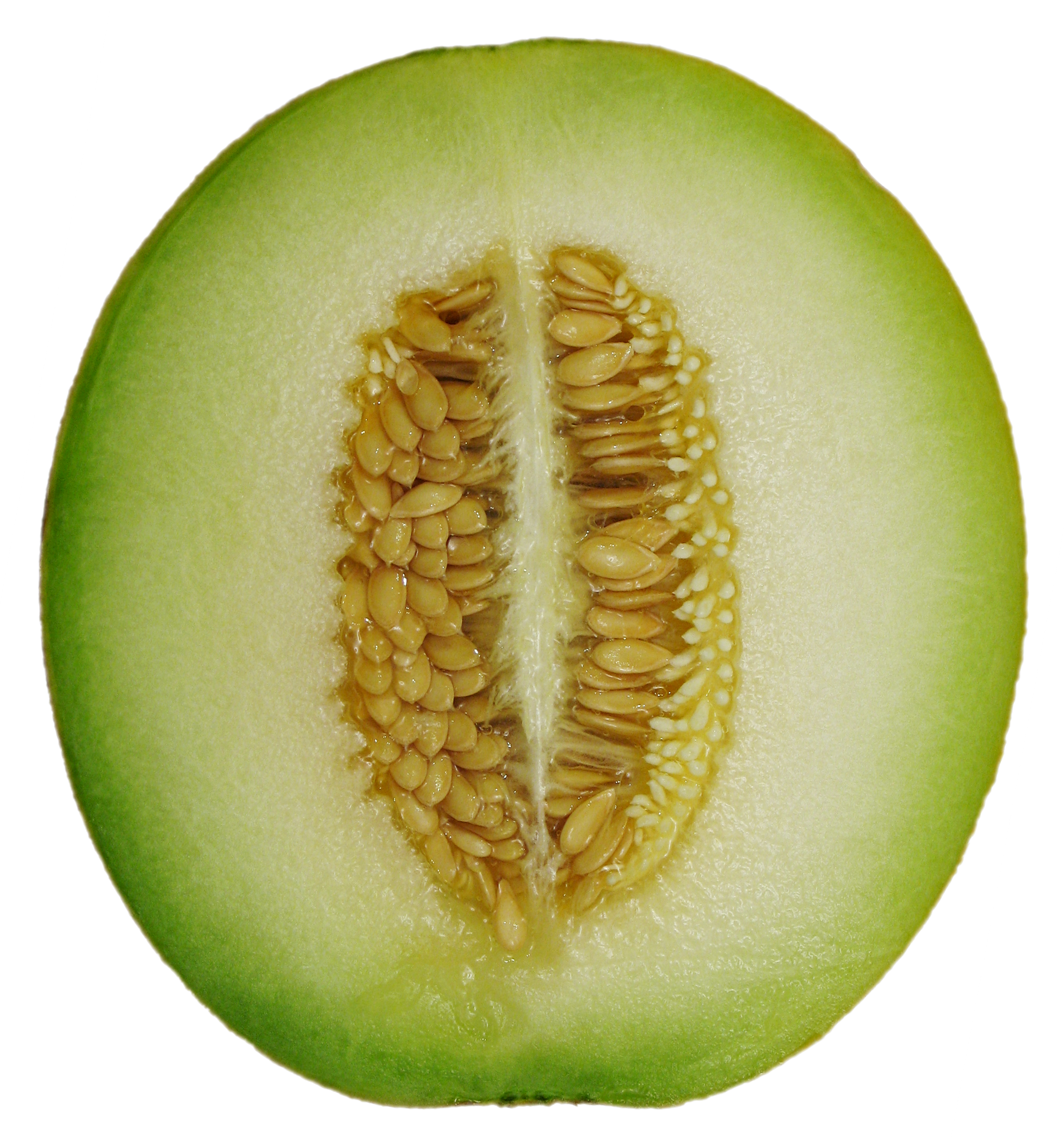How does a Flowering Plant Reproduce
Sexual Reproduction :
The formation of new plants through the fusion of male and female gametes is called sexual reproduction. Sexual reproduction is carried out only in flowering plants. Flowers are the reproductive organs of a plant. Usually a flower contains both male and female reproductive cells called gametes. Such flowers are also called complete or bisexual flowers. When flowers have either male gametes or female gametes, they are called incomplete or unisexual flowers. Such types of flowers are found in corn and papaya plants. A complete flower has all the four parts: sepals, petals, stamens, and pistils. Let us take a closer look at stamens and pistils.

- Stamens (male organ) They bear the anthers that contain pollen grains. Pollen grains have male gametes in them.
- Pistil (female organ) The pistil is divided into a stigma, style, and ovary. The ovary contains the female gametes, called ovules.
Mature plants flower, and the flower after pollination and fertilization becomes a fruit.
Fruits may have one or more seeds inside them. New plants develop from these seeds. Let us learn how pollination and fertilization happens, and how fruits and seeds are formed.
Read More:
- Vegetative Reproduction in Plants
- Reproduction in Humans
- Different Types of Asexual Reproduction
- Viviparous Reproduction
Activity
Aim: To observe the parts of hibiscus (China rose) flower Materials needed: A hibiscus flower, a blade (to be used under adult supervision), a glass slide, and a hand lens
Method:
1. Take the flower and observe it for colour and number of sepals.
2. Open out the petals of the flower and place them on a slide.

3. Count the number of petals and stamens.
4. bserve where the petals are attached. You should see a long tube-like structure with round tips. This structure is the carpel. The lower end of this tube is swollen. This swollen part is the called ovary.
5. Now carefully slice the entire tube lengthwise with the help of a blade. Use a hand lens to observe what is inside the ovary. You will find tiny, ball-like structures called ovules inside the ovary (see the picture alongside).
Pollination
The transfer of pollen grains from the anther to the stigma is known as pollination. This is the first step in the process of seed formation. The male gamete, present in the pollen grains of the anthers, needs to reach the female gamete in the ovary. Only then fertilization can take place.
Pollination is of two types:
- Self-pollination In self-pollination, pollen grains are transferred from the anther to the stigma of the same flower.
- Cross-pollination In cross-pollination, the pollen grains are transferred from the anther of one flower to the stigma of another flower of the same kind.

Activity
Aim: To dissect a flower
Materials needed: Any flower (e.g., hibiscus), scalpel, glass slides, and a blade for cutting a longitudinal section of ovary.
Method:
1. Peel out all the petals of the flower. Place them on the glass slide.
2. Now carefully take out all the stamens and pistil of the flower and place them separately.

3. Observe the kind of stamens that the flower has.
4. Slice off the pistil of the flower lengthwise to reveal the ovary.
Can you see the ovules? Note your observations.
Note: Adult supervision required
Agents of Pollination
The most common agents of pollination are wind, water, and insects.
- Wind Wind blows away pollen grains from the anthers of one flower to the stigma of another flower. Such flowers are small, not brightly coloured, and do not produce nectar (a sweet liquid produced by flowers). Pollen grains are very light so they are easily blown away by the wind. This type of pollination occurs in wheat, rice, and maize.
- Water Pollination in aquatic plants such as sea grass and Vallisneria is usually carried out by water. Water- pollinated flowers release their pollen grains into the water, and are slowly carried to other flowers by water currents.

Vallisneria - Insects Many insects visit flowers for nectar. During the process, some pollen stick to the body parts of these insects. When these insects visit another flower, the pollen grains fall on the stigma. Insect-pollinated flowers usually have a sweet smell, brightly coloured petals, and are rich in nectar. Flowers visited by nocturnal (active during night) insects have less showy petals but are often strongly scented. This type of pollination is found in sweet pea, orchids, and jasmine.

An insect-pollinated flower
Fertilization
After successful pollination, the stigma secretes nutrients.

- The pollen grain absorbs these nutrients and starts growing.
- A thin tube grows out of the pollen grain.
- The pollen tube keeps growing till it reaches the ovule inside the ovary and enters it.
- The male gamete is carried inside the pollen tube. Once the pollen tube reaches the ovule, the male gamete is released and it fuses with the female gamete (eggs) present there. The process of fusion of male andfemale gametes is called fertilization.
- A zygote is formed after fertilization takes place.
Fruit and Seed Formation
After fertilization, the ovary enlarges to form the fruit:
- The wall of the ovary becomes the fruit wall.
- The ovules become the seeds.
- A fruit may have one or more seeds.
- Petals, sepals, and other parts of the flower dry up and fall off.
The fruit is the seed-bearing part or the ripened ovary of the flowering plant.
The seed is the ripened ovule which contains an embryo and is covered by a protective coat.
When a seed has matured and suitable conditions of air, water, and temperature are available, it germinates. Otherwise, it lies inactive till conditions for germination become favourable.

The process by which the embryo in the seed becomes active and begins to grow into a new plant is called germination.
